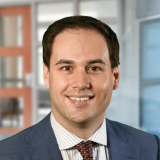During a recent patient encounter, I shared with my patient that I similarly had a chronic pain condition. The moment the words left my mouth, I saw my patient physically relax. Her shoulders dropped, her breathing steadied, and she opened up about her health struggles in a way she hadn’t before. In that instant, I knew my self-disclosure had provided a sense of safety, credibility, and trust, qualities often lacking in health care encounters with women in pain. However, self-disclosure in the medical profession remains a controversial and complex issue, requiring careful consideration of both potential benefits and risks.
The American Psychological Association defines self-disclosure as “the act of revealing personal or private information about one’s self to other people.” In psychotherapy, self-disclosure, when used with discretion, can serve as a powerful tool to increase rapport and trust. Historically, social movements like humanism in the 1960s, feminism in the ’70s and ’80s, and modern therapy modalities like cognitive-behavioral therapy have embraced self-disclosure as a means to foster connection and authenticity. However, the debate over its place in clinical practice is far from settled.
Psychoanalytic therapy has long advocated for a “blank slate” therapeutic approach, which discourages self-disclosure to preserve professional boundaries between patient and clinician. Some physicians have argued that self-disclosure risks shifting the therapeutic focus away from the patient, creating role reversals where the patient may feel responsible for emotionally supporting the physician. Additionally, it has the potential to blur boundaries, leading to excessive familiarity or inappropriate expectations of a friendship-style relationship.
Despite these concerns, self-disclosure, when done with a purpose, can be a powerful tool in fostering trust, reducing stigma, and strengthening the doctor-patient relationship. Hanson found that therapist self-disclosure was actually meaningful to therapeutic relationships, as patients often mirror their physician’s willingness to open up. When a doctor shares their own experience with a condition, it can validate a patient’s struggle and encourage adherence to treatment. Through demonstrating empathy and vulnerability, patients can share their concerns more openly when they sense that their physician truly understands their experience. Additionally, one can empower patients through a physician’s story and provide hope, demonstrating that living with a condition is possible.
Given the delicate nature of self-disclosure, medical professionals should employ a structured approach to ensure it remains patient-centered. First, clinicians may obtain implicit consent by asking “would it help if I shared something personal?” to ensure that patients are comfortable with hearing their experience. Next, the disclosure should be brief and purposeful, with the focus quickly returning to the patient’s situation. Any shared information should be directly relevant to the patient’s experience and the patient should gain some support or advice from it. If these two aspects are not met, then alternative methods can also be considered, such as referencing “other patients” or making generalized supportive statements.
Assessing personal motivation is essential, so Richard Schwartz, PhD, developed the acronym WAIT—“Why Am I Telling?” to help clinicians reflect on their motives before self-disclosing. Professional boundaries can be kept by avoiding oversharing and never providing personal contact information. Lastly, maintaining self-care is crucial, as physicians are more prone to self-disclosure when they are seeking emotional support. Seeking peer support, therapy, and personal reflection can prevent disclosure from being driven by burnout rather than direct patient benefit.
As medical professionals, we must thoughtfully weigh the risks and benefits of self-disclosure, ensuring that any personal revelation serves the patient’s well-being rather than our own emotional needs. When used judiciously, self-disclosure can be a valuable tool to build trust, reduce stigma, and create stronger therapeutic professional relationships. However, it should always be approached with clear intent, knowledge of professional boundaries, and a commitment to keeping the patient’s health care at the center of the conversation.
How do you navigate self-disclosure with your patients? Share in the comments.
Stephanie Moss, MD, is a PGY-1 psychiatry resident physician in Chicago and a dedicated advocate for diversity, health equity and marginalized communities. She is a prominent mentor to similar non-traditional, first generation doctors. In medical school she was able to overcome STEP1 failures, a leave of absence, and invisible disabilities. Dr. Moss shares her insights through public speaking and writing, with her work featured on platforms like MedPageToday, Doximity, KevinMD, and the American Medical Women's Association.
Image by Alphavector / Shutterstock







